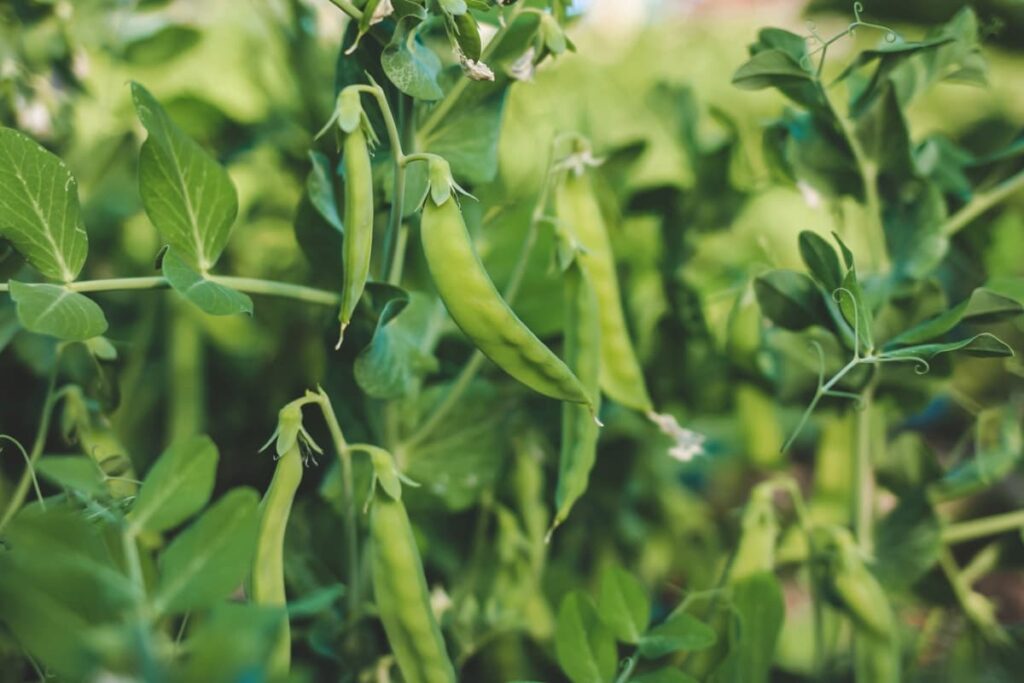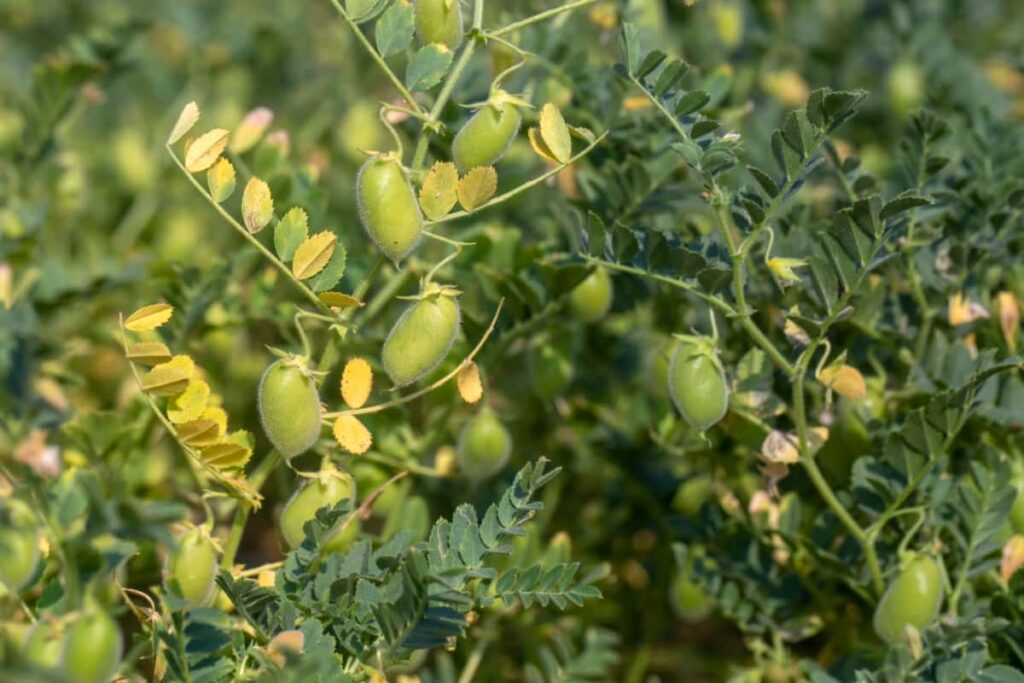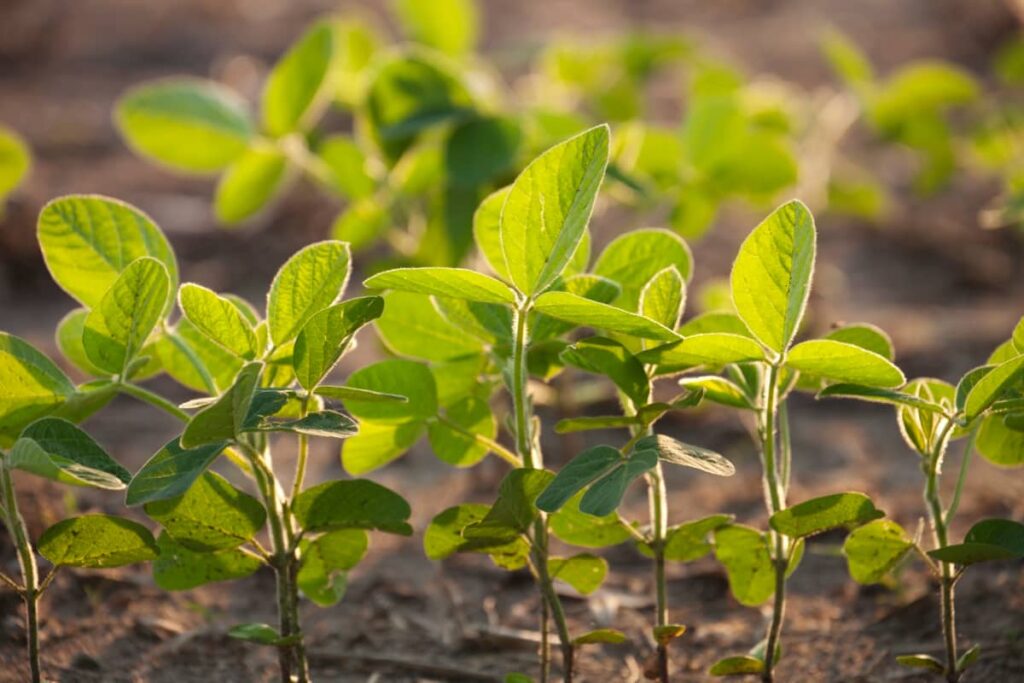Legumes are an essential part of any sustainable garden or farm. Not only do they provide a valuable source of protein and other nutrients, but they also enrich the soil by fixing nitrogen, making it available for other plants to utilize. However, like all plants, legumes require proper nutrition to thrive and produce abundantly.

While commercial fertilizers are readily available, many gardeners prefer to use homemade, zero-waste fertilizers for peas and beans to avoid synthetic chemicals and reduce their environmental impact. In this guide, we’ll explore 11 DIY legume fertilizer recipes specifically tailored for legumes.
11 Best Homemade Fertilizers for Legumes
Compost Tea
Compost tea is one of the potent organic fertilizers for beans, rich in nutrients and beneficial microorganisms. To prepare, fill a bucket with water and add compost, molasses, and aeration to promote microbial growth. Let it steep for two days, stirring occasionally. Dilute the tea with water until it resembles weak tea. Apply to the soil around legume plants, avoiding foliage, every 2-4 weeks during the growing season. It’s best used in the early morning or late afternoon to minimize stress on plants.
Fish Emulsion
Fish emulsion is a fantastic budget-friendly legume nutrient, rich in nitrogen, phosphorus, and potassium. To prepare, blend 1 part fish scraps or fish meal with two parts water in a container. Allow the mixture to ferment for 12-14 days, stirring occasionally. Strain and dilute it with water in a 1:3 ratio before using. Apply the fish emulsion fertilizer to legumes every 2-4 weeks during the growing season. Ensure proper dilution and avoid overuse to prevent burning or damaging the plants.
Eggshell Tea
Eggshell tea is an excellent sustainable pea fertilizing solution, providing a boost of calcium and other essential minerals. To prepare, collect clean, crushed eggshells from about a dozen eggs. Boil the shells in a gallon of water for 5-10 minutes, then let the mixture steep overnight. Strain and dilute it with an equal amount of water before applying. Use this nutrient-rich tea during the vegetative stage of legume growth, preferably in the morning. Apply the solution around the base of the plants, ensuring it reaches the root zone.
Banana Peel Fertilizer
Banana peel fertilizer is a kitchen waste fertilizer for legumes and an easy-to-make bean fertilizer for nourishing legumes. To prepare, collect banana peels and chop them into small pieces. Place these pieces in a container filled with water and let them soak for a few days, stirring occasionally. Once the water turns brown and has a noticeable banana scent, strain out the peels, dilute the liquid with water (1:5 ratio), and your fertilizer is ready to use. Apply it to the soil around your legume plants every two weeks during the season.
Wood Ash
Wood ash can be a valuable organic natural legume growth enhancer. Collect wood ash from hardwoods like oak or maple. Avoid ash from treated or painted wood. Mix the ash into compost or soil at a ratio of 5-10 pounds per 100 square feet. Wood ash provides potassium, which aids in flower and fruit production, and helps legumes fix nitrogen.
In case you missed it: Sugarcane Fertilizer Schedule: Explore Dosage, NPK Ratio, and Nutrient Management

Apply in early spring before planting or as a side dressing during the growing season. Avoid using ash in alkaline soils, as it can raise pH levels too high. Always wear hand gloves and a face mask when handling ash, as it can be caustic.
Coffee Grounds
Coffee grounds make an excellent eco-friendly pea plant feed due to their rich nitrogen content. Collect used coffee grounds and dry them thoroughly to prevent mold growth. Once dried, mix the grounds into the soil around your legume plants or add them to your compost pile.
Coffee grounds can be applied throughout the season as a side dressing or worked into the soil during planting. They provide a slow-release source of nitrogen, promoting healthy growth and improving soil structure. However, avoid over-application, as excessive nitrogen leads to lush foliage growth instead of fruit or seed production.
Green Manure
One effective homemade nitrogen fixation booster for legumes is green manure. Sow cover crops like clover, alfalfa, or vetch in the legume beds. Allow them to grow until they reach a good height, then chop them down and work them into the soil before they flower. This enriches the soil with organic matter, nitrogen, and other nutrients, promoting healthy legume growth. Use green manure in the fall or early spring, allowing enough time for decomposition before planting legumes. Incorporating green manure not only enhances soil fertility but also improves its structure and water retention.
Molasses Solution
To create a homemade organic fertilizer for legumes, consider making a molasses solution. To prepare, mix one tablespoon of unsulfured molasses with 1 gallon of water. Stir thoroughly until the molasses is fully dissolved. This solution provides essential nutrients like potassium, iron, and sulfur, promoting healthy growth in legume plants. Apply the molasses solution to the soil around the base of the legumes once every two weeks during the growing season.
Seaweed Fertilizer
To create a homemade organic nutrient mix for legumes with seaweed fertilizer for legumes, start by collecting fresh seaweed from a clean beach or purchase dried seaweed from a garden store. Thoroughly rinse the seaweed to remove excess salt. Chop or tear the seaweed into small pieces and place them in a container.
In case you missed it: How to Make Homemade Fertilizer for Greenhouse Crops

Cover the seaweed with water and let it steep for several days, stirring occasionally. Strain the liquid into a separate container, diluting it with water if necessary. Use the seaweed fertilizer to water your legumes, applying it every 2-4 weeks during the growing season.
Epsom Salt Solution
One effective homemade soil amendments for peas is an Epsom salt solution. To prepare, dissolve one tablespoon of Epsom salt in 1 gallon of water. Stir until the salt is completely dissolved. This solution can be applied to legume plants by either spraying the foliage or watering around the base of the plants. Use it once every 4-6 weeks during the growing season. Regular application can enhance the health and productivity of legume crops, leading to better yields and nutrient-rich harvests.
Homemade Bone Meal
To prepare this biodegradable legume plant food, Collect bones from leftover meals or purchase them from a butcher. Clean the bones thoroughly, removing any remaining meat or tissue. Dry them completely, then grind them into a powder using a blender. Sprinkle this bone meal around the base of your legume plants, ensuring it is well incorporated into the soil.
Bone meal is particularly beneficial during the initial stages of growth and flowering. Apply it in early spring or before planting, ensuring it’s mixed into the soil to support healthy root development and overall plant vigor.
In case you missed it: 10 Homemade Fertilizers for Tulsi in Pots: Natural Ways to Nourish Potted Holy Basil

Conclusion
These recipes utilize common household ingredients, organic matter, and natural processes to enrich the soil and promote healthy growth. Whether you’re growing peas, beans, lentils, or other leguminous crops, these homemade fertilizers can help you achieve a bountiful harvest while nurturing the health of your soil and the environment.
- Management Pests and Diseases in Your Cotton Field
- Sheep Farming Business Plan for Beginners
- Aquaponic Farming at Home: A Step-By-Step Guide
- Profitable Village Farming Business Ideas in 2024
- High-Yield Aquaculture: Fast-Growing Fish for Farming
- Effective Fish Pond Construction Techniques for Beginners
- Irrigation and Water Management in Pineapple Farming
- Blossom to Harvest: Mastering Flowering and Pollination in Papaya Farming
- Pig Fattening Essentials: From Selection to Sale for Beginners
